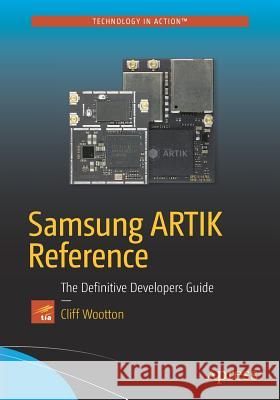Samsung ARTIK Reference: The Definitive Developers Guide » książka
topmenu
Samsung ARTIK Reference: The Definitive Developers Guide
ISBN-13: 9781484223215 / Angielski / Miękka / 2016 / 409 str.
Kategorie:
Kategorie BISAC:
Wydawca:
Apress
Język:
Angielski
ISBN-13:
9781484223215
Rok wydania:
2016
Ilość stron:
409
Waga:
0.75 kg
Wymiary:
25.4 x 17.78 x 2.26
Oprawa:
Miękka
Wolumenów:
01
Dodatkowe informacje:
Wydanie ilustrowane











